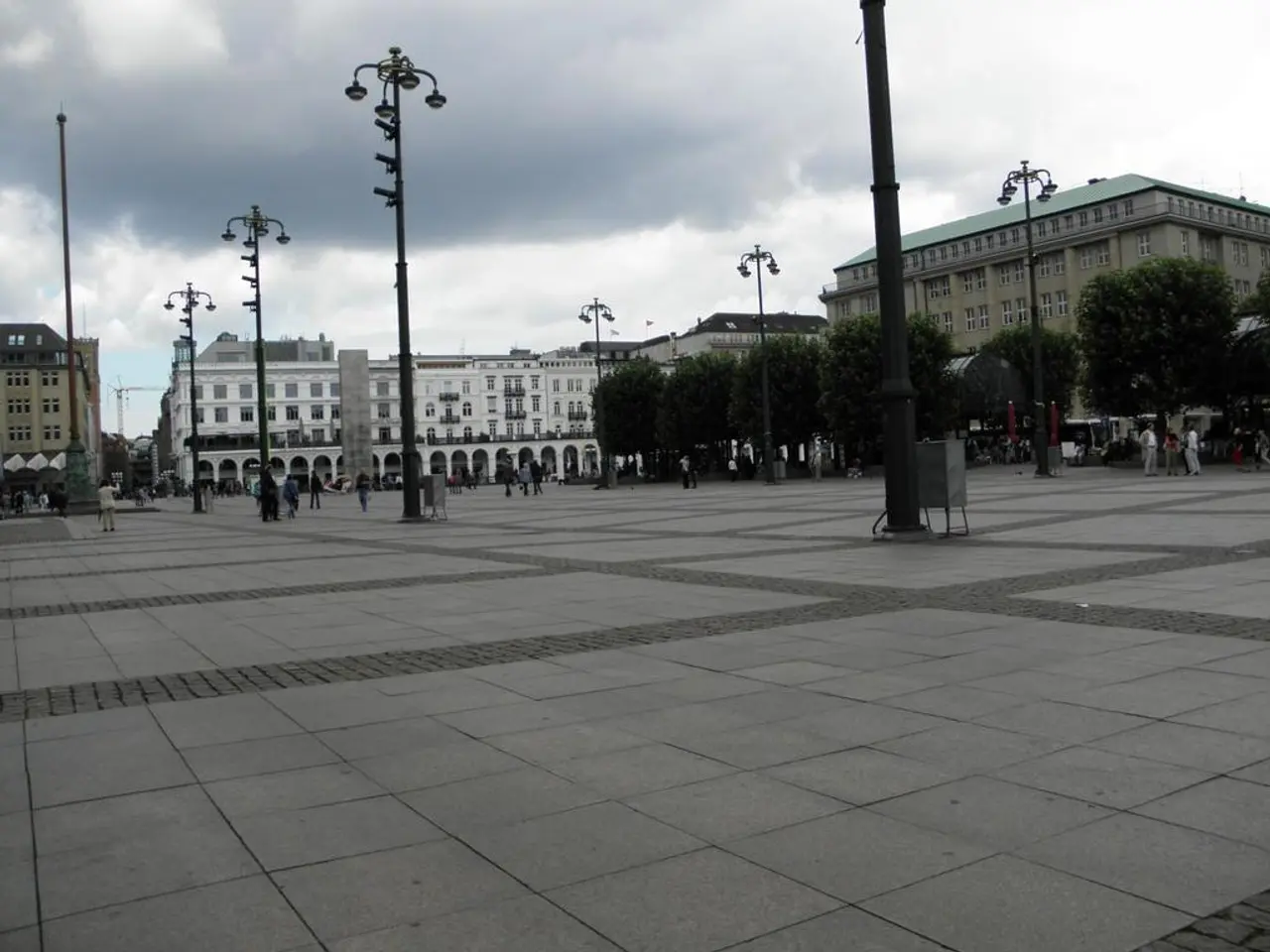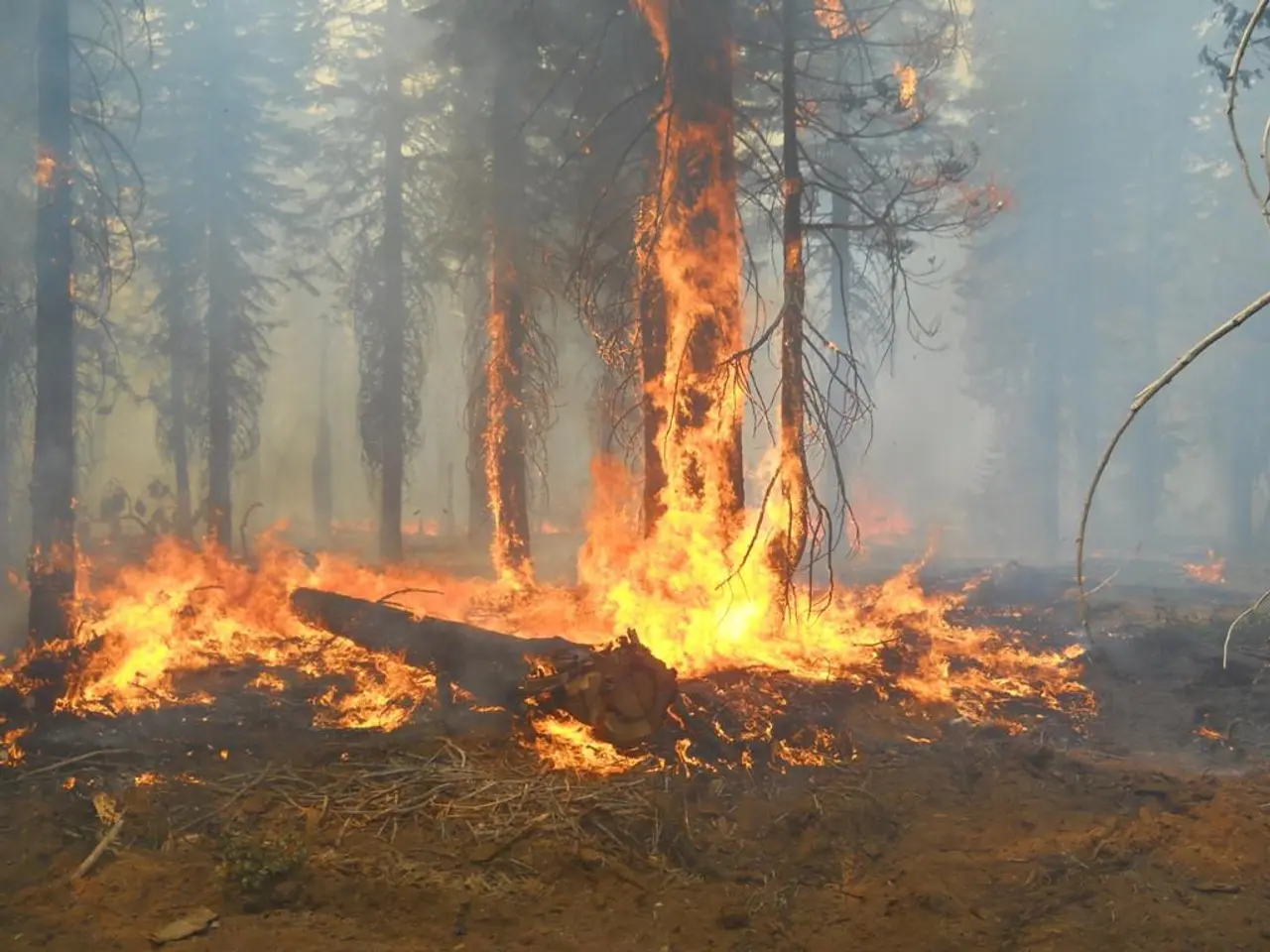Severe heatwave envelops UAE: Thermometer soars to 51.8°C in Sweihan, with Dubai and Abu Dhabi also sweltering; weather forecasters predict possible rain showers.
The United Arab Emirates (UAE) is currently experiencing a peak heat period, with temperatures soaring to dangerously high levels and the onset of severe dust storms.
According to the National Center of Meteorology (NCM), the low in Abu Dhabi tonight is forecast at 34°C, under clear skies. The city, however, is expected to remain very warm throughout the evening, with overnight lows of 35°C. Dubai, on the other hand, is experiencing even higher temperatures, peaking at 44°C. This is one of the highest temperatures recorded in the country this year, as reported by the NCM.
The extreme heatwave is accompanied by dusty winds, known as samum, which reduce visibility and worsen conditions. These winds are expected to be light to moderate, occasionally freshening during the day and causing blowing dust in exposed areas.
Coastal and inland areas in the west may see increased humidity overnight and into Sunday morning, with fog or mist formation likely. There is a chance of convective cloud formation over eastern and southern regions, possibly bringing localized rainfall. However, the NCM has not specified any regions in particular where the localized rainfall is most likely to occur.
The NCM has not issued any warnings about extreme temperatures or dangerous heat levels in the UAE. Nevertheless, authorities are urging residents to take precautions, stay hydrated, and avoid prolonged exposure to the sun. The public is advised to avoid outdoor exposure during peak hours in Abu Dhabi.
To mitigate heat-related health risks, residents are advised to avoid outdoor activities during peak heat hours, especially from late morning to sunset. They are also encouraged to stay indoors in air-conditioned or cool environments as much as possible. Keeping well hydrated by drinking plenty of fluids regularly is also recommended.
Additionally, residents are advised to minimize exposure to dust storms and samum winds, which can cause respiratory issues and reduce visibility. It is also important to stay updated with official weather alerts via the NCM and local news channels.
This intense heatwave is expected to persist with little reduction in peak temperatures through August 10, keeping daytime temperatures commonly between 45°C and over 50°C in desert areas. The Arabian Gulf and Oman Sea are expected to remain calm.
On August 1, 2025, a record-breaking temperature of 51.8°C was recorded in Sweihan, Al Ain. This peak summer heat is a reminder for residents to prioritize safety and health during this challenging weather cycle.
[1] National Center of Meteorology (NCM) website [2] Gulf News [3] Khaleej Times [4] The National [5] Arabian Business
Despite the peak heat period causing severe weather conditions in the UAE, the National Center of Meteorology (NCM) suggests residents stay updated on local news for warnings and forecasts related to the ongoing heat wave. However, it is also important for residents to prioritize their health and culture, minimizing outdoor activities during peak heat hours and staying hydrated, as the extreme temperatures are expected to persist until August 10.








